Building surveys in La Palma during the 2021 volcanic eruption
In December 2021, BGS BUFI student Sara Osman visited La Palma in the Canary Islands to assess buildings damaged during the Cumbre Vieja volcanic eruption. In this blog, she talks about her experiences on the island.
18/03/2022 By BGS Press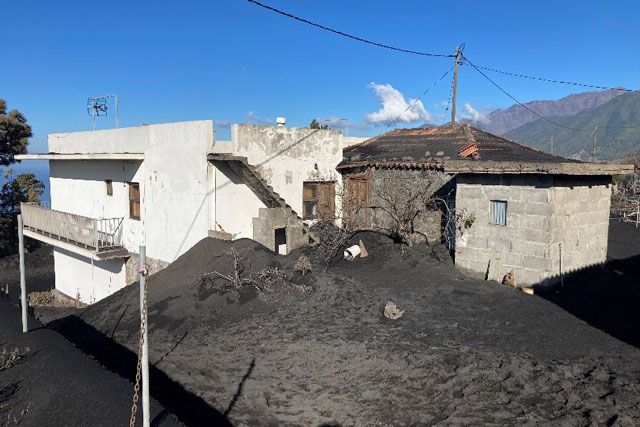
For my PhD project I am using laboratory experiments to investigate when roofs may collapse under tephra loads. ‘Tephra’ comprises all the material ejected during an explosive volcanic eruption, including ash and larger particles. Buildings close to an eruptive source are at risk but, on pitched roofs, the tephra deposit will sometimes slide off and this is what I am testing. My results will help emergency planners to identify buildings most at risk from tephra fall and allow designers to take account of tephra loads when planning new buildings.
The eruption of Cumbre Vieja on La Palma, which started in September 2021, provided a great opportunity to ground truth the results from my lab work. I was very pleased to be invited to spend a few days at the beginning of December with the emergency team from the Instituto Geológico y Minero de España (IGME, the Spanish geological service) to assess building damage. Time is of the essence when collecting data during an eruption and so, after a hectic day getting a risk assessment approved, booking flights and accommodation and completing all the COVID-related paperwork, I was on my way to the Canary Islands.
Arriving at the hotel in Breña Baja, I could see black ash dusting the pavements in the town and the white volcanic plume (of water vapour) rising above the hills, but there was no disruption to day-to-day life. The hotel guests were a strange mix of tourists and emergency workers, including teams of firefighters who were clearing the roofs of houses to make sure tephra did not build up to dangerous depths.
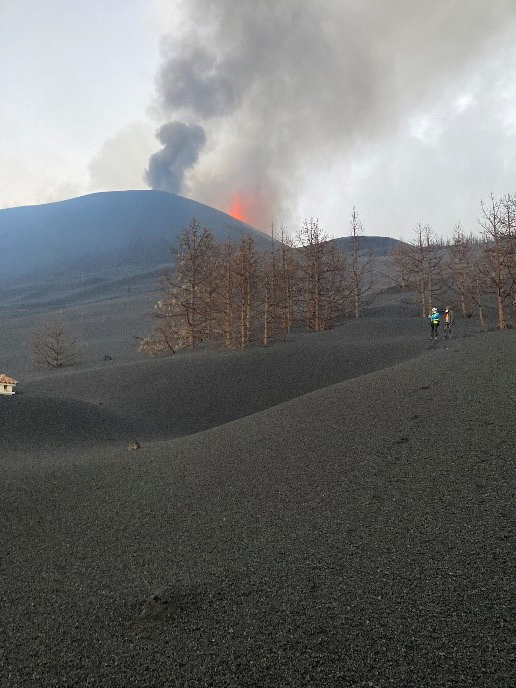
The eruption seen from Las Manchas. © Sara Osman.
On my first day with IGME, we travelled into the exclusion zone. This was a tightly controlled area: my name had to be on an approved list and we were signed in and out every day. IGME geologists took readings at key checkpoints to monitor how much tephra had fallen in the past week, as well as lava samples for lab analysis. We inspected roofs in Las Manchas where the tephra depth was around 1 m; the roofs of some outbuildings and weaker structures had collapsed but houses where the tephra had been cleared were undamaged. The roof of the large wrestling arena had completely collapsed.
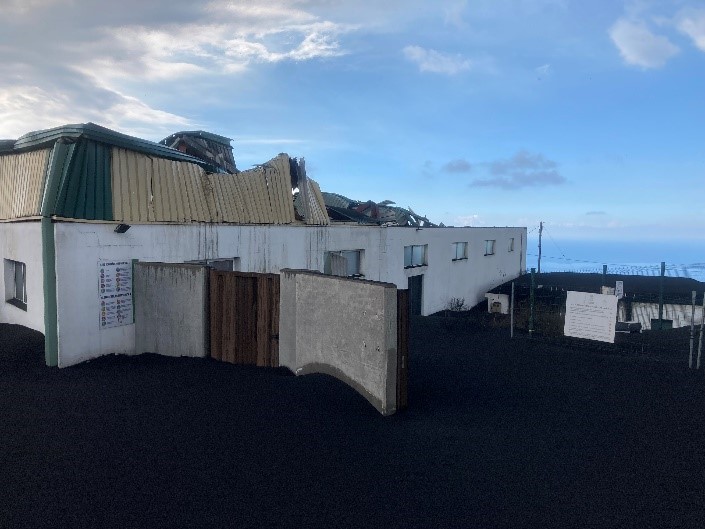
The roof of the wrestling arena in Las Manchas collapsed under the tephra load. © Sara Osman.
On my second day we visited Tacande, a village being subsumed by lava, where lava flows were up to 10 m deep. We again took tephra depth measurements and collected samples to measure density and porosity of the deposit, which both affect the load and so the likelihood of roof collapse. In the evening, one of the houses we had surveyed was completely destroyed by a new lava flow. The power of the eruption was awe inspiring.
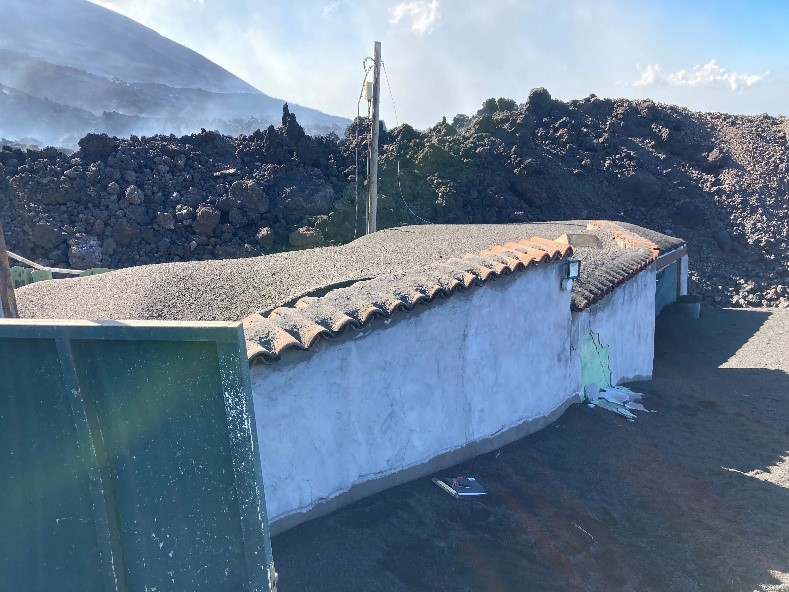
Lava approaching a farm above Tacande. © Sara Osman.
For my final day in the field, we visited the villages of Tajuya and La Laguna. Here there were vast greenhouses of bananas but the crops were dying as ash had got inside the structures. It is likely to be two years before new crops can be harvested. This highlighted the devastating impact of the eruption on the local economy.
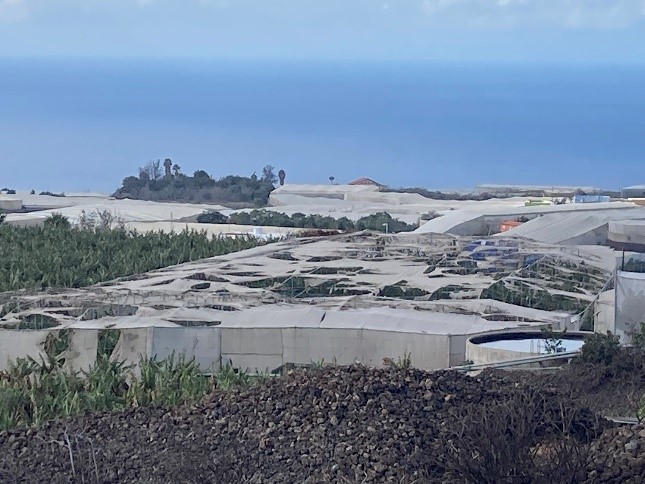
Greenhouses in La Laguna damaged by tephra fall. © Sara Osman.
The Cumbre Vieja eruption is now over and the residents of La Palma are assessing the damage and starting to plan for the future. I am using the field data to refine estimates of loads that lead to roof collapse, which will assist emergency responders in future eruptions. There is still much to learn about the impact of volcanic eruptions, but each survey of an affected area increases our knowledge and enables us to reduce the risk to people living in volcanic areas.
I owe huge thanks to the IGME staff: Inés Galindo Jiménez for arranging my visit and Julio López Gutiérriez and Javier Martínez Martínez for taking me with them on their field work.
About the author
Sara Osman is a BGS BUFI student at the University of Leeds. Her BGS supervisor is Dr Julia Crummy, a volcanologist at the BGS’s office in the Lyell Centre, Edinburgh.



